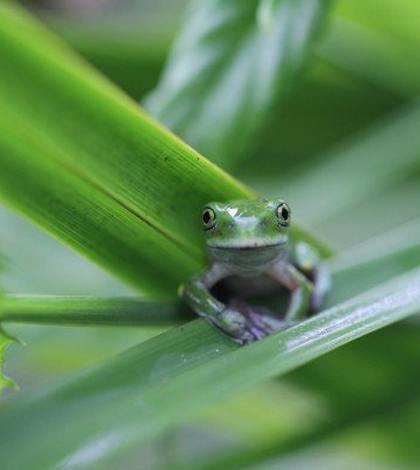Defeating A Deadly Amphibian Fungus, Courtesy Of Climate Change

A new study offers some hope for amphibian populations decimated by deadly fungus. (Credit: Tracie Seimon / Wildlife Conservancy Society)
Chytrid fungus is a deadly amphibian fungus that has caused huge reductions in amphibian numbers worldwide. But a release from the Wildlife Conservation Society suggests that several factors may be turning the tide against the fungus after years of amphibian species decimation: climate change and a burgeoning resistance in some frog species.
Modeling results from data obtained in Albertine Rift species in Africa suggests that, as the climate continues to warm, the environment will no longer be as hospitable to chytrid fungus. The rift is an extremely rich area of amphibian diversity that extends across Tanzania, the Democratic Republic of Congo, Uganda, Rwanda and Burundi. In addition, modeling showed that rainfall above 1800 millimeters per year was also likely to curb the success of the fungus.
Good news for the species in the rift is considered by researchers to be good news for amphibians everywhere. In addition to the projected role of climate change in contracting the influence of the fungus, researchers also found that frogs in the rift infected by chytrid fungus were in good health, suggesting a natural resistance to the fungus has taken hold in the region.
Top image: A new study offers some hope for amphibian populations decimated by deadly fungus. (Credit: Tracie Seimon / Wildlife Conservancy Society)




0 comments